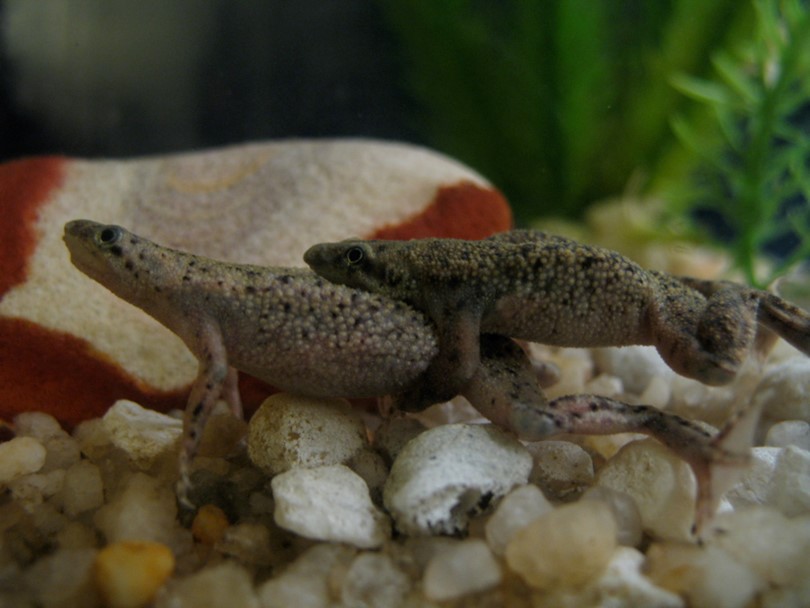Most frogs tend to be generally healthy and long-lived. However, there might be tell-tale signs. You need to evaluate the living conditions such as wrong temperature, high levels of ammonia, finding traces of water, fouled soil, and excessive light. This could contribute to depressed immune system and illness.
Signs of illness include if your frog might have unusual behavior. There is a gradual or sudden weight loss.
You can see weight loss around the abdominal area, which starts to look hollow, and you may even see the outline the backbones and hipbones. There is an excessive digestive gas that is associated with overeating, intestinal parasites, oversized prey, intestinal infection, gas bubble disease, or even respiratory infection. There might be red blotches that are caused by hemorrhaging, or white blotched that is caused by fungi. You can see that there is a fuzziness or cloudiness in the frog’s eyes. There is a general swelling in the frog’s head, body, or even the limb. This could be the result of poor water quality to bacterial infection, kidney diseases that would cause edema. Your pet could spend too much time in hiding.
It is drinking or eating less, and there is a tremendous weight loss. However, before you judge that your frog is not eating, you need to give a variety of food before you judge that it is sick. If you think that it is truly sick, bring a stool sample to your vet. If it does not have any stool, you need to bring in a whole frog. You can see discolored skin; the joints are swollen. There is a great discharge from the nose, eyes, or mouth. You can see runny droppings that would occur for more than two days. If you see that frogs are yawning too much, this could be a symptom of a disease with no cure.
You can prevent this and give your pet a good health and long life through designing and maintaining a tank, you should also manage its temperature, water quality, light, furnishing, topography, and diet needs of your frog. You need to constantly check these conditions because this plays a critical role in preventing the onset of diseases.
Here are some other health issues that could arise if you buy from illegal breeders or if you don’t quarantine your pet frog:
Your pet frog is regularly exposed to bacteria, but sometimes, the bacteria are fought off by their mighty immune system. If your pet is stressed out paired with an depressed immune system, the bacteria can fully invade. Some stressful conditions are foul water, overcrowding, and improper temperature. You need o make sure that you can provide proper husbandry to lessen the risk of your frog’s stress.
Loss of appetite, listlessness, redness on the underside of the thighs and belly, excessive skin slough, skin shedding, loss of appetite are some signs of bacterial infection. If you do not notice this infection, there could be more extreme neurological signs. Bring your frog to the vet immediately; s/he will prescribe tretracycline bath and antibiotics. These baths may become stressful and could be very ineffective.
The fungal infection could infect scrapes or wounds, which is very common for tadpoles. This infection could be easily treated topically by removing your pet from the water and daubing mercurochrom, malachite green, or hydrogen peroxide.
Herpes Virus, Iridovirus and Ranavirus
Your pet frog is very susceptible to various viral diseases. The most common virus that your pet easily contract is the herpes virus. The herpes virus causes kidney tumors. This would affect the kidney, which will cause hydrops and hydrocoelom. Your animal would easily lose weight and would die after spawning. Another virus is the Iridoviruses, specifically the ranaviruses, is the subject for many years. These viruses are responsible for eradication certain breeds of frogs.
Generally, amphibian viruses are very uncommon to general population. However, more of them are slowly being discovered because of the increased interest in the disease in both wild and captive frogs.






 Author and long-time animal lover. Sharing knowledge on pet care through experience and the written word.
Author and long-time animal lover. Sharing knowledge on pet care through experience and the written word.